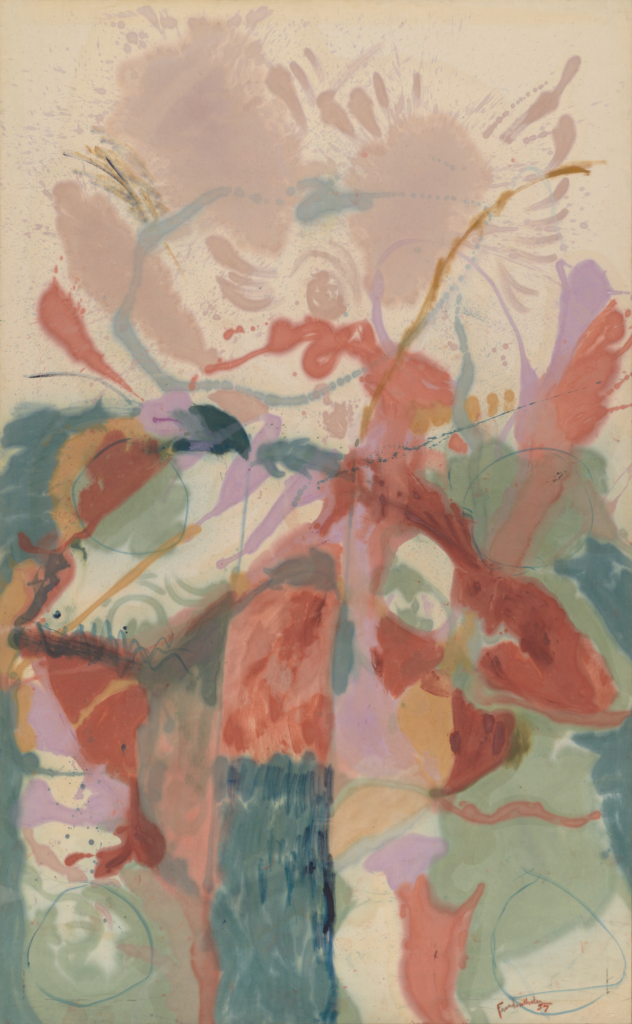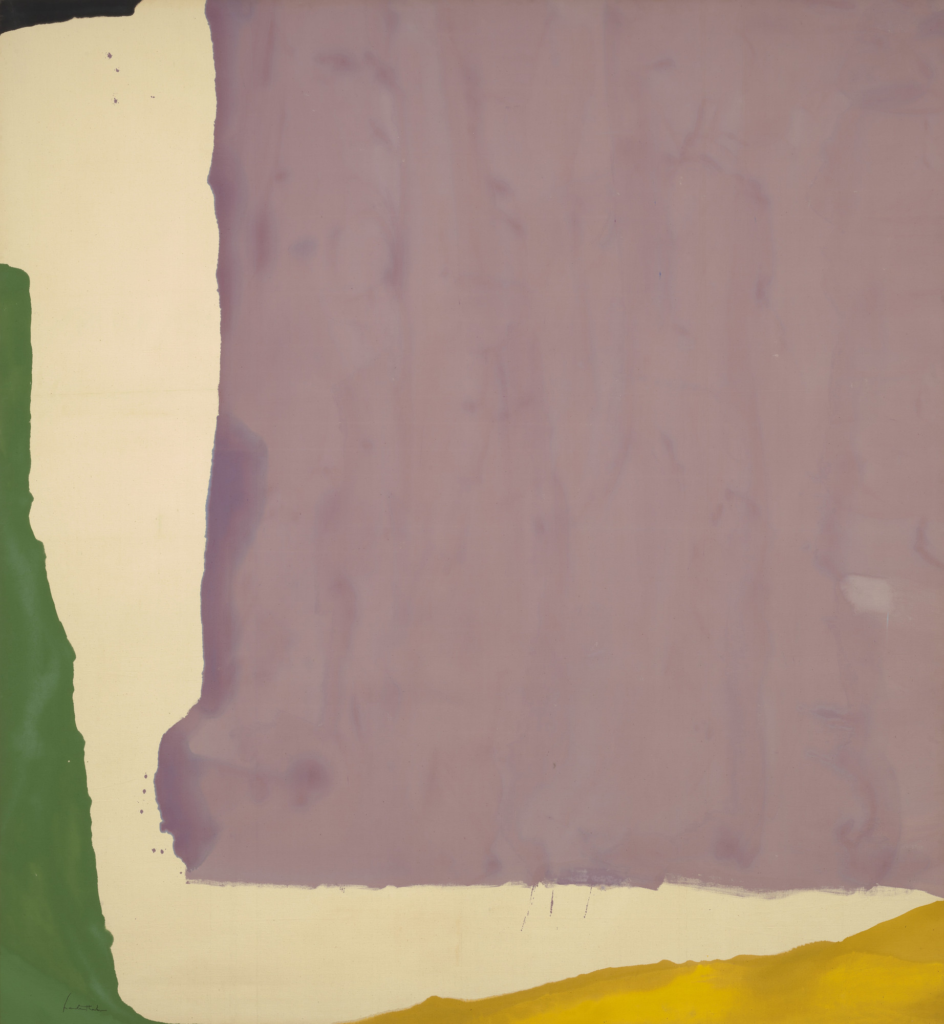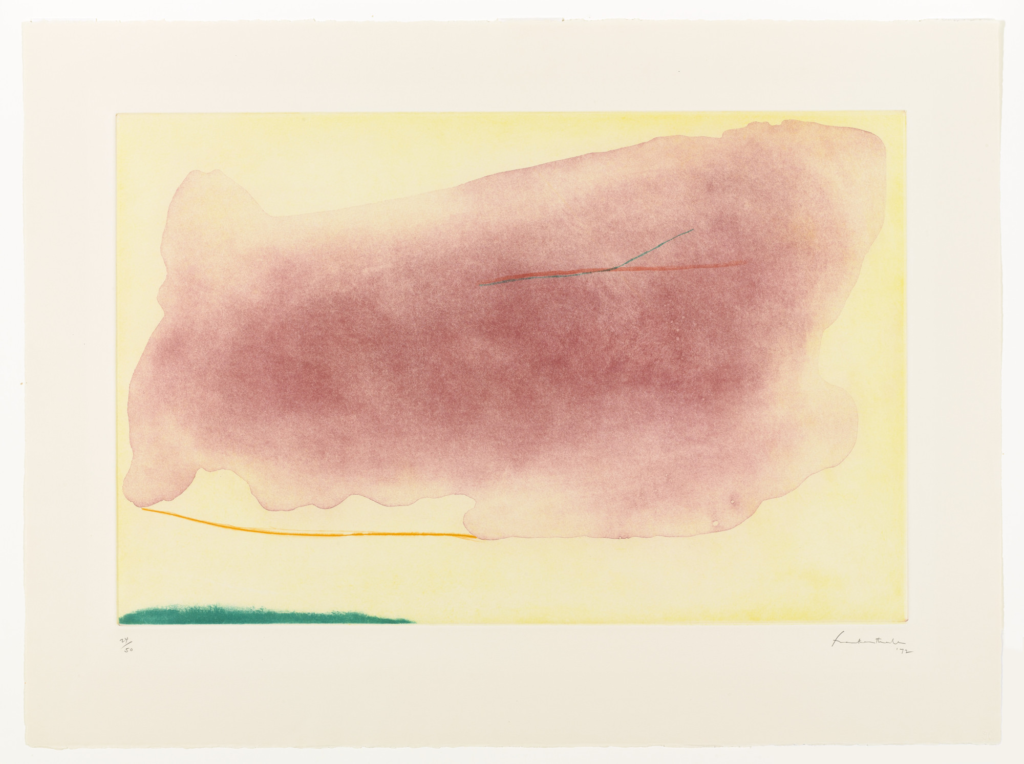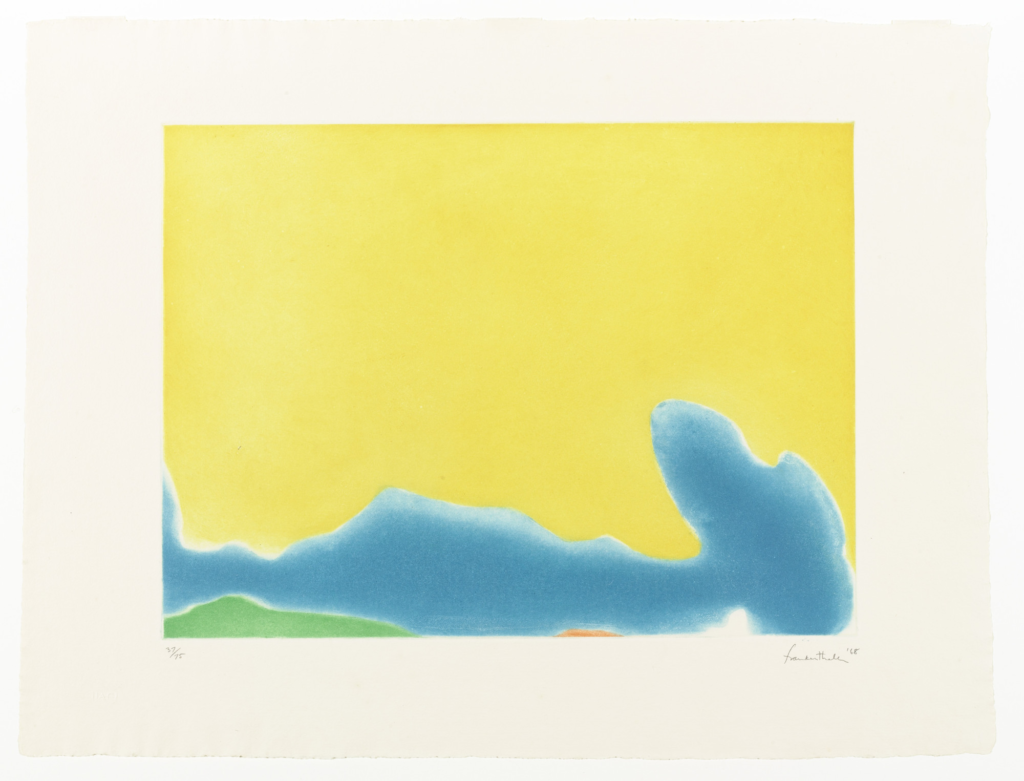Helen Frankenthaler BIOGRAPHY

Early Life and Education
Helen Frankenthaler, a renowned American abstract expressionist painter, had a fascinating early life and education that played a significant role in shaping her artistic career. Born in 1928 in New York City, Frankenthaler grew up in a privileged and creative environment. Her father, Alfred Frankenthaler, was a New York Supreme Court justice, while her mother, Martha Lowenstein, was a German immigrant and a passionate amateur artist.
From an early age, Frankenthaler showed a talent and love for art. She attended the Dalton School in Manhattan, where she received early training in painting and drawing. However, it was during her time at Bennington College in Vermont that her artistic style began to take shape. Frankenthaler studied under renowned artists Paul Feeley and Rufino Tamayo, who encouraged her to experiment with different techniques and materials.
After graduating from college in 1949, Frankenthaler immersed herself in the New York art scene. She became associated with the influential artists of the time, including Pollock, Willem de Kooning, and Franz Kline. Her work gained recognition and acclaim, and she quickly established herself as a leading figure in the abstract expressionist movement.
Throughout her career, Frankenthaler continued to push the boundaries of abstract painting. She experimented with different media, including lithography and woodcuts, and explored various themes and styles. Her innovative approach to color and composition had a profound impact on the art world and inspired generations of artists.
What is Helen Frankenthaler known for?

Helen Frankenthaler was known for her innovative and influential style. She was known for her use of color and her technique of pouring paint onto canvas, which created a unique and fluid effect.
Frankenthaler’s work was often characterized by large, colorful, and abstract shapes that seemed to float and interact with each other. Her paintings were a departure from the more gestural and aggressive style of many abstract expressionists of the time.
Instead, Frankenthaler’s work had a sense of serenity and lyricism. She was a pioneer in the field of color field painting, which emphasized the expressive power of color and shape. Her work had a significant impact on the development of abstract expressionism and continues to be celebrated and studied today.
Career highlights

Artistic Development
One of the most significant influences on Frankenthaler’s artistic development was her encounter with the work of Jackson Pollock. Seeing his iconic drip paintings inspired her to develop her unique method of pouring thinned paint directly onto unprimed canvas. This groundbreaking technique, which she called the “soak-stain” method, allowed the color to merge with the canvas, creating vibrant and fluid compositions.
In addition to her artistic achievements, Frankenthaler advocated for women in the arts. She co-founded the Artist’s Rights Society, an organization dedicated to protecting the rights of visual artists, and actively supported initiatives to promote gender equality in the art world.
What medium did Helen Frankenthaler use?
Helen Frankenthaler was a renowned American abstract expressionist painter known for her innovative techniques and use of color. She primarily worked with acrylic paint on canvas, but she also experimented with other mediums, such as oil and watercolor, throughout her career.
What color scheme did Helen Frankenthaler use in her painting cravat? Regarding color schemes, Frankenthaler’s paintings often featured vibrant and bold colors. She was known for using large areas of color that blended and bled into one another, creating a sense of fluidity and spontaneity. While she did not limit herself to a specific color scheme, she frequently used various hues, including bright blues, pinks, purples, and greens.
Her use of color was instrumental in conveying emotion and creating an atmosphere in her artwork. In her painting “Cravat,” it is likely that Frankenthaler employed her signature approach to color, utilizing a variety of vibrant and expressive tones to capture the essence of the subject matter.
Helen Frankenthaler List of Work

How did Helen Frankenthaler create her art?
Helen Frankenthaler was famous for her innovative techniques and use of color. She created her art through a process known as “soak-stain,” which involved pouring diluted paint onto unprimed canvas. It allowed the paint to soak into the canvas, creating vibrant and flowing colors.
What materials did Helen Frankenthaler use?
Frankenthaler primarily used acrylic paint, which she would mix with turpentine or water to create a more fluid consistency. She often used large brushes or sponges to apply the paint to the canvas, allowing it to spread and blend naturally. She also experimented with different tools and techniques, such as pouring the paint directly onto the canvas or using a spray bottle to create more controlled drips and splatters.
Additionally, Frankenthaler often incorporated other materials into her artwork, such as charcoal or pastels, to add texture and depth. She sometimes incorporated collage elements, such as fabric or paper, into her paintings.
Notable Artworks
1952 | Mountains and Sea |
2000 | Grey Fireworks |
1966 | Persian Garden |
1961 | Blue Form in a Scene |
1957 | Round Trip |
1960 | Untitled |
2009 | Aerie |
2004 | Snow Pines |
1976 | Desert Pass |
1980 | Cameo |
1950 | Playa |
1959 | Acres |
1998 | Bilbao |
2001 | Solar lmp |
1952 | Shoreline |
1957 | Interior |
1992 | Freefall |
What style of art is Helen Frankenthaler?
Modern Art
Abstract Expressionism
Color Field
Lyrical Abstraction
Post-Painterly Abstraction
Who inspired Helen Frankenthaler?
Helen Frankenthaler was inspired by several individuals throughout her career. One of her early influences was her teacher, Paul Feeley, who introduced her to the techniques of staining and pouring paint onto canvas. This technique would become a defining characteristic of Frankenthaler’s work.
Frankenthaler was also inspired by the work of other artists, particularly the color-field painters of the 1950s and 1960s. Artists like Morris Louis and Kenneth Noland pushed the boundaries of traditional painting techniques, and their use of vibrant, bold colors influenced Frankenthaler to experiment with her color palette.
The landscapes and natural beauty of her surroundings also served as a source of inspiration for Frankenthaler. Growing up in New York City and spending summers in Maine, she was surrounded by urban and natural environments. These contrasting landscapes influenced her abstract interpretations of nature and the use of organic shapes and forms in her artwork.

